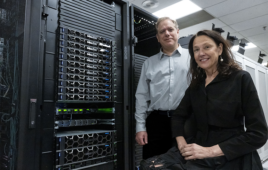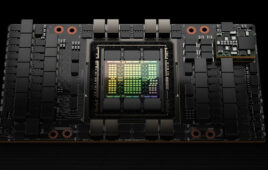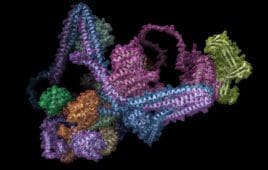Endometriosis, a condition where endometrial tissue grows outside the uterus, has a strong genetic underpinning. A new study published in the Journal of Molecular Diagnostics sheds light on this connection. Researchers from a team including Genzeva, LumaGene, RYLTI Biopharma, Brigham & Women’s Hospital of Harvard University and QIAGEN Digital Insights used a unique approach in…
Pitt’s high-performance computing upgrade signals accelerated translational research
The University of Pittsburgh’s recent, significant expansion of its high-performance computing capabilities, courtesy of a gift from Dell Technologies, indicates a strategic commitment to using large-scale data analysis for faster translational research. The additional 9.672 gigaFLOPS of computational power – translating to nearly 9.7 trillion additional computations per second – could help Pitt’s Innovation Hub…
Denmark teams up with Novo Nordisk Foundation, NVIDIA to launch visionary AI research center
A collaboration between the Novo Nordisk Foundation, the Export and Investment Fund of Denmark (EIFO), and NVIDIA will establish a national AI Innovation Centre in Denmark focused on accelerating research and innovation in fields including healthcare, life science, and quantum computing. The initiative is led on the Danish side by the Novo Nordisk Foundation, which…
A-Alpha Bio attracts $51M in total funding to advance machine-learning-driven protein interaction research
A central hurdle in computational protein design is the mismatch between proteins designed in silico and their actual behavior after synthesis. “You can design millions of proteins on a computer over the course of a week or a month, but computational approaches are just not good enough,” explained David Younger, co-founder and CEO of A-Alpha…
Raising the efficiency floor and innovation ceiling with generative AI in drug discovery
Large language models (LLMs) such as ChatGPT promise advances that extend beyond capturing public interest. Because transformer models like GPT have an architecture that supports the understanding of language in context, they point to an array of novel possibilities for scientific research. “The transformer architecture is critical,” according to Michael Connell, the chief operating officer…
Expanding genomic analysis: Inside NVIDIA Parabricks integration with Amazon Omics
Following the recent expansion of Amazon Omics, as covered in our previous article “Ready, set, analyze: Amazon Omics unveils new Ready2Run workflows”, we wanted to explore the role of third-party providers in shaping the landscape of genomic analysis and bioinformatics. NVIDIA is one of these providers. The GPU company has worked to integrate their Parabricks…
Opentrons Flex flexes the power of AI in lab automation
Brooklyn-based lab automation company Opentrons has debuted its new Flex robot, with the aim of broadening access to advanced lab automation for life scientists. In a recent email interview, Opentrons CEO, Jonathan Brennan-Badal, highlighted that the Opentrons Flex robot is designed to offer a technically sophisticated, yet economically accessible automation platform for life scientists. The…
Ready, set, analyze: Amazon Omics unveils new Ready2Run workflows
Amazon Web Services (AWS) recently announced a significant expansion of Amazon Omics at the annual AWS Life Sciences Executive Symposium in Boston. Amazon Omics, which the company introduced last year, helps life science organizations to store, query and analyze genomic, transcriptomic and other omics data. While other tools such as Qlucore Omics Explorer, Genospace, StrandOmics,…
Decoding the enigma of the commander complex: Employing AlphaFold2 to illuminate biological structures
Machine learning algorithms, such as Alphabet’s neural network-based model AlphaFold2, are steadily transforming medical research, shedding light on complex biological structures. A recent case in point involves research using the technology to explore the Commander complex, a 16-protein complex crucial for cellular protein transport processes. This complex is not only vital for normal cellular function,…
4 DNA sequencing predictions for 2023
Continued innovations in bioinformatics paired with the falling cost of DNA sequencing are poised to spur research breakthroughs in 2023. To gauge how the DNA sequencing field is likely to evolve, we reached out to Logan Zinser, SVP, finance, Element Biosciences and Keith Robison, principal engineer, NGS Computational Biology, Ginkgo Bioworks. In the following feature, the two muse on themes…










